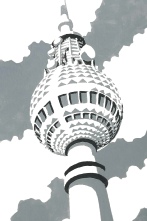A HALF-LIFE OF TRAVEL - EXCERPTS
INTRODUCTION
What do we look for in a book on travel? A useful guide? Practical lists? Or inspiration
to break out and explore for ourselves? What is a good travel book?
Half-way into writing this book, it has now dawned on me how its form, a series of
entries, arranged alphabetically, describing all (or most of) the places I have ever
visited, has become a vehicle for a work which is very different from how I first
envisaged it. Outwardly a travel guide, whatever that might mean to people, this
book has turned out not to be remotely useful to the traveller! It is of too wide
a scope for any single holiday. It is too broad in detail to be of any use when visiting
a particular place mentioned in these pages. And it is too easily prone to wandering
off its subject, exploring avenues of thought and reflection which might add nothing
to one’s immediate enjoyment of somewhere.
In its defence, I rather hope this book might be one of those works that stimulate
the armchair traveller into going to see these places for real. Or at least to check
up on the internet or on Google Earth what it is I am trying to say about them. This
is a series of reflections on various places, which should in some way push the
reader into finding out more about what I have described.
It was when I came back from a long, self-indulgent tour of Germany, France and Italy
in the summer of 2003 that I first had the idea of making a map out all the places
I had ever visited. Onto a blank outline of Europe, I began to draw out all the routes
I had taken, eventually straightening their lines into a personal London Tube-style
diagram of satisfying complexity.
That was ten years ago, and now, with another decade of travelling behind me, it
seemed like a good time to update it, and then to combine it with something I had
long wanted to write: a travel book all of my own, but not one which would necessarily
serve any practical use to the traveller – there are plenty of them available already.
These are essays on place. They are personal, they are intentionally patchy in their
coverage of what the serious traveller might actually need. Instead of providing
definitive descriptions, they are broad portraits, intended to draw the reader into
each place, perhaps to coax the reader into looking differently at well-known, much-loved
cities, to try at least to describe certain characteristics of a place, but without
going into every detail; to inspire the more curious to visit and explore further
afield. […]
BERLIN
GERMANY
Given all that has happened, it is surprising that we find Berlin still standing.
At the end of the Second World War there were serious plans for putting an end to
the perceived Berlin-centric chaos that had led to half a century of slaughter and
destruction; some plans involved razing the city entirely, and largely turning Germany
over to arable land, so as to avoid the risk of an urban, disenfranchised proletariat
finding solace in Communism. The plans were shelved once it was becoming clear that
in China the Communists who were gaining ground were in fact rural-based!
Another plan recommended building a nice, spanking-new Berlin next to the ruins
of the old, preserving these as a Mahnmal, a dark memorial to the horrors of war.
Such things have been done at Oradour-sur-Glane in France, while at Dresden for many
years the bombed-out shell of the Frauenkirche served as a grim reminder of the damage
inflicted on that city. The same is true of Coventry’s cathedral, of course. But
these stark epitaphs to human folly rarely inspire; instead they oppress, they crush,
they deaden. How much more uplifting the sight is of the newly rebuilt Frauenkirche,
as a testament to humankind’s ability to pick itself up again, start afresh, even
to forgive.
I am glad that Berlin does not now stand as a morbid ruin, though they would certainly
have been impressive, if that particular idea had been followed through. At the time,
it must have seemed a very real and feasible proposal; Berlin twice had led the world
to the brink of disaster, and now looked like it was ushering in an even darker period
of nuclear facing-off. Let’s teach the Bosch a lesson once and for all, let’s wipe
this old, imperialistic Berlin off the face of the earth…
As with so many other major German cities, in a way old, pre-war Berlin does now
lie to the side of the modern metropolis. For the hills and tussocky parks on the
edges of suburbia are all that remain of the rubble of a bombed-out world city, hauled
away from the centre by the Trummerfrauen, the rubble women, who cleared the bomb
sites of all the piles of crushed and blackened stonework, so that Berlin could start
again. How strange, then, to think of all the broken pediments, the battle-scarred
masonry and remnants of an elegant city just grassed over and forgotten. […]



